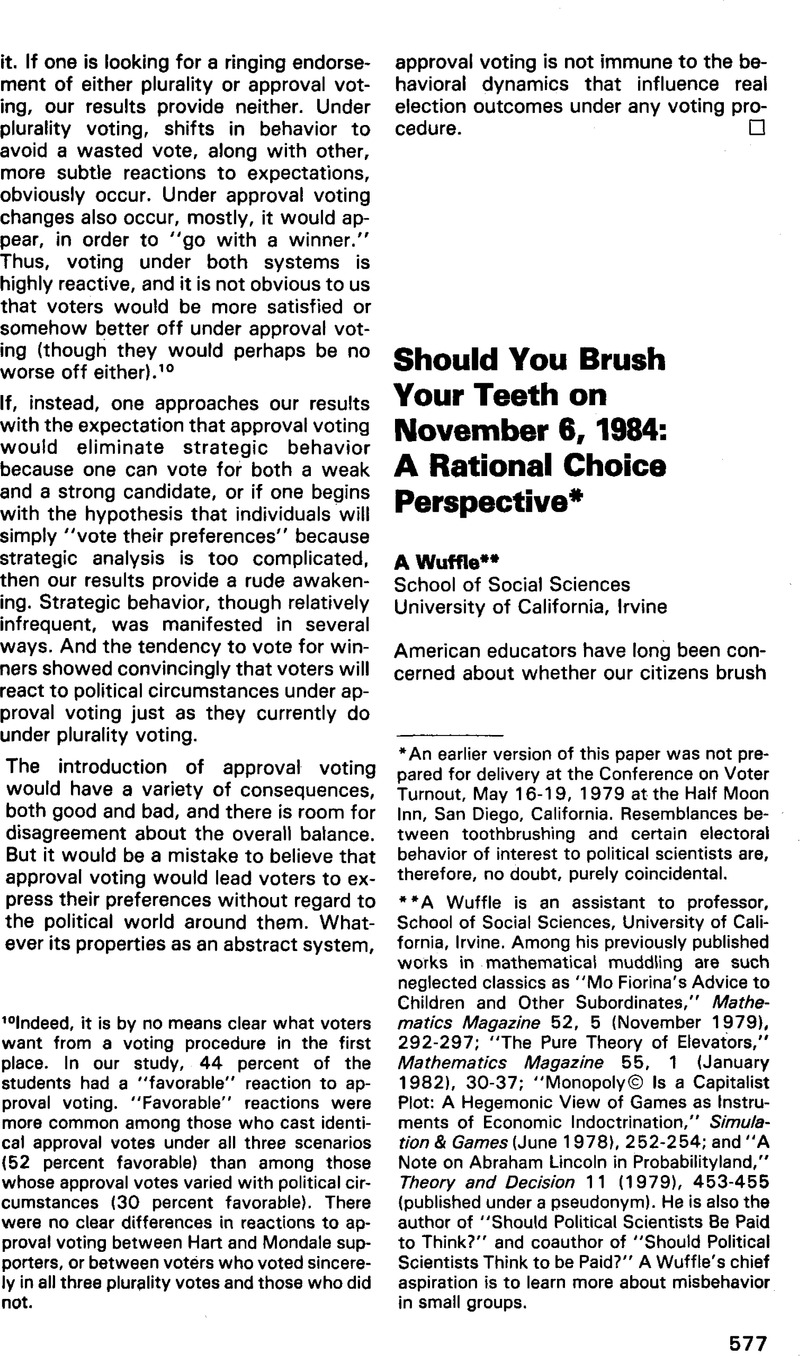Crossref Citations
This article has been cited by the following publications. This list is generated based on data provided by Crossref.
Wuffle, A.
1988.
The ‘Minimax Blame' Rule for Voter Choice: Help for the Undecided Voter on Novembere, 1988.
PS: Political Science & Politics,
Vol. 21,
Issue. 3,
p.
639.
Wuffle, A
and
Collet, Christian
1997.
Why Democrats Shouldn't Vote (With Acknowledgements to R. Erikson).
Journal of Theoretical Politics,
Vol. 9,
Issue. 1,
p.
137.
Manteltasche, Dagobert D.
1999.
Otto I.Q. Besser-Wisser: An Appreciation of the Pioneer of Post-Distanciationalist Politometrics.
PS: Political Science & Politics,
Vol. 32,
Issue. 4,
p.
730.
Manteltasche, Dagobert D.
1999.
Otto I.Q. Besser-Wisser: An Appreciation of the Pioneer of Post-Distanciationalist Politometrics.
PS: Political Science & Politics,
Vol. 32,
Issue. 4,
p.
730.
Hunter, Lance Young
Meares, Wesley Lawrence
and
Ginn, Martha Humphries
2018.
Terrorism and voter turnout in seven urban centers in the United States.
Behavioral Sciences of Terrorism and Political Aggression,
Vol. 10,
Issue. 2,
p.
110.
Otjes, Simon
and
Willumsen, David M.
2019.
How does turnover affect turnout? Government alternation and voter participation in parliamentary democracies.
Electoral Studies,
Vol. 59,
Issue. ,
p.
49.
Santana, Andrés
and
Aguilar, Susana
2021.
Heroines of the Ballot: The Gender Gap and the Costs of Voting.
Social Politics: International Studies in Gender, State & Society,
Vol. 28,
Issue. 1,
p.
215.



